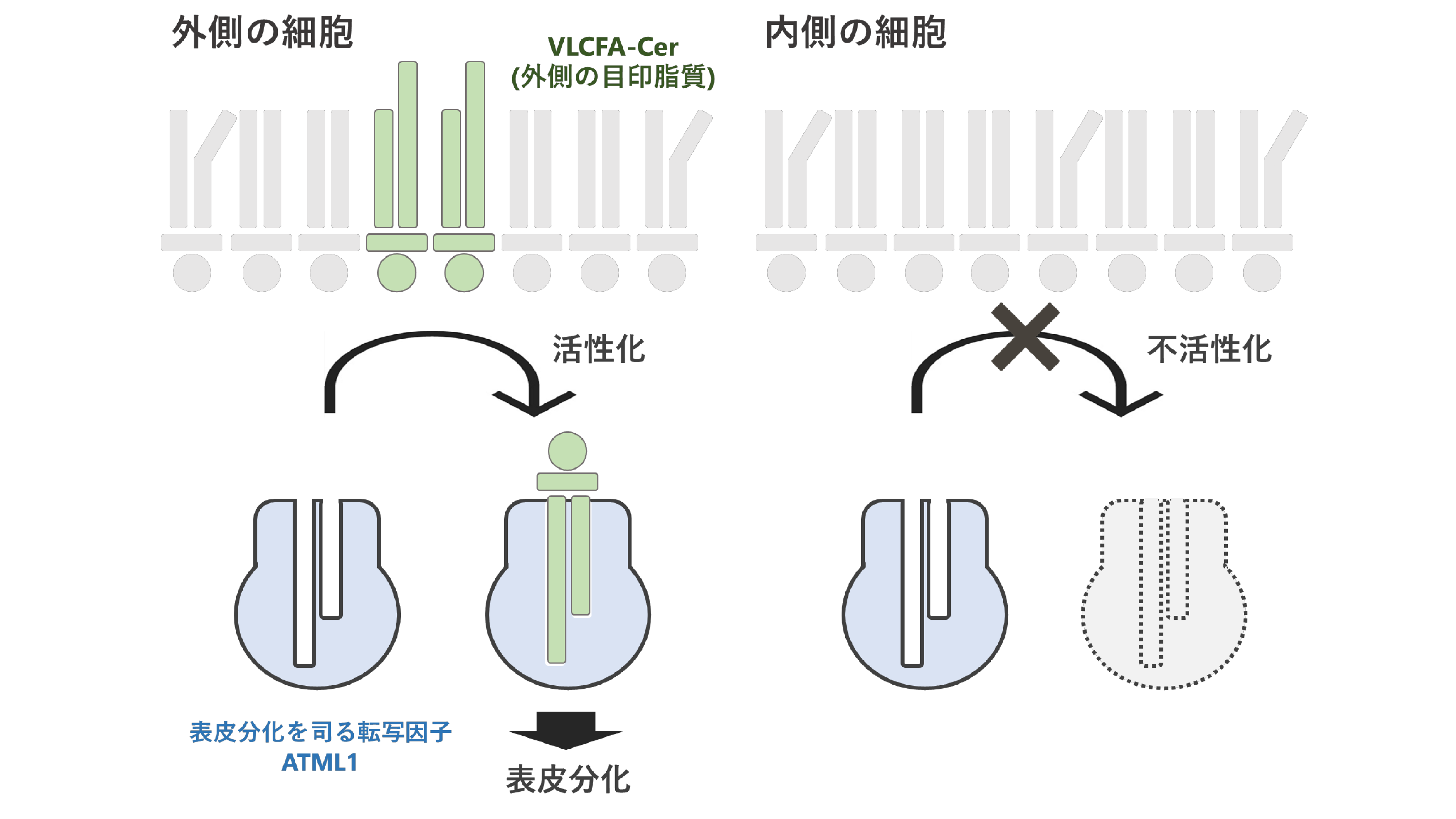DATE2021.01.25 #Press Releases
Outside? Inside?
Disclaimer: machine translated by DeepL which may contain errors.
~Understanding the mechanism by which epidermal cells are produced at the boundary of the external environment in plants~.
Graduate School of Arts and Sciences, The University of Tokyo
Graduate School of Science, The University of Tokyo
Summary
Land plants live surrounded by environmental stresses such as aridity and harmful organisms that cause disease. Therefore, plants protect themselves by developing epidermal tissues, which are sheets of specialized cells, at the boundaries with the external environment. Key transcription factors that are important for epidermal cell differentiation were discovered in 2003, and our understanding of the molecular mechanisms that control epidermal cell differentiation is improving. However, how cells recognize the boundary with the external environment, or "location," and how epidermal cells differentiate into appropriate locations has remained unresolved.
In this study, Associate Professor Mitsutomo Abe and his group at the Graduate School of Arts and Sciences, The University of Tokyo, have newly discovered the mechanism by which cells recognize their position in the plant body and elucidated the "mechanism by which the appropriate cells differentiate at the appropriate location. Using molecular genetics and visualization techniques in Arabidopsis thaliana, the research group found that expression of key transcription factors alone is not sufficient for epidermal cells to differentiate, and that binding of key transcription factors to special lipids (ceramides containing extremely long-chain fatty acids) produced in cells bordering the external environment and the stable performance of key transcription factor functions are critical The key transcription factor function is important for the stable functioning of the key transcription factor.
It is thought that epidermal cells developed to protect plant bodies from the harsh external environment when plants expanded onto land. As the global environment is expected to change dramatically in the future, a better understanding of epidermal cells, which are located at the boundary with the external environment, is expected to lead to the creation of plants that are hardy even under harsh conditions.

Figure: Model of cell position recognition by interaction between ATML1 and lipids.
Outer cells have VLCFA-Cer, a special lipid as a "outer" marker, as a plasma membrane component, while inner cells do not have VLCFA-Cer as a plasma membrane component. Since ATML1, a transcription factor that regulates epidermal differentiation, is activated only when it binds to VLCFA-Cer, only the outer cells differentiate into epidermal cells.
Kenji Nagata, a third-year doctoral student in the Department of Biological Sciences at the Graduate School of Science, is participating in this research.
For more information, please visit the website of the Graduate School of Arts and Sciences.


